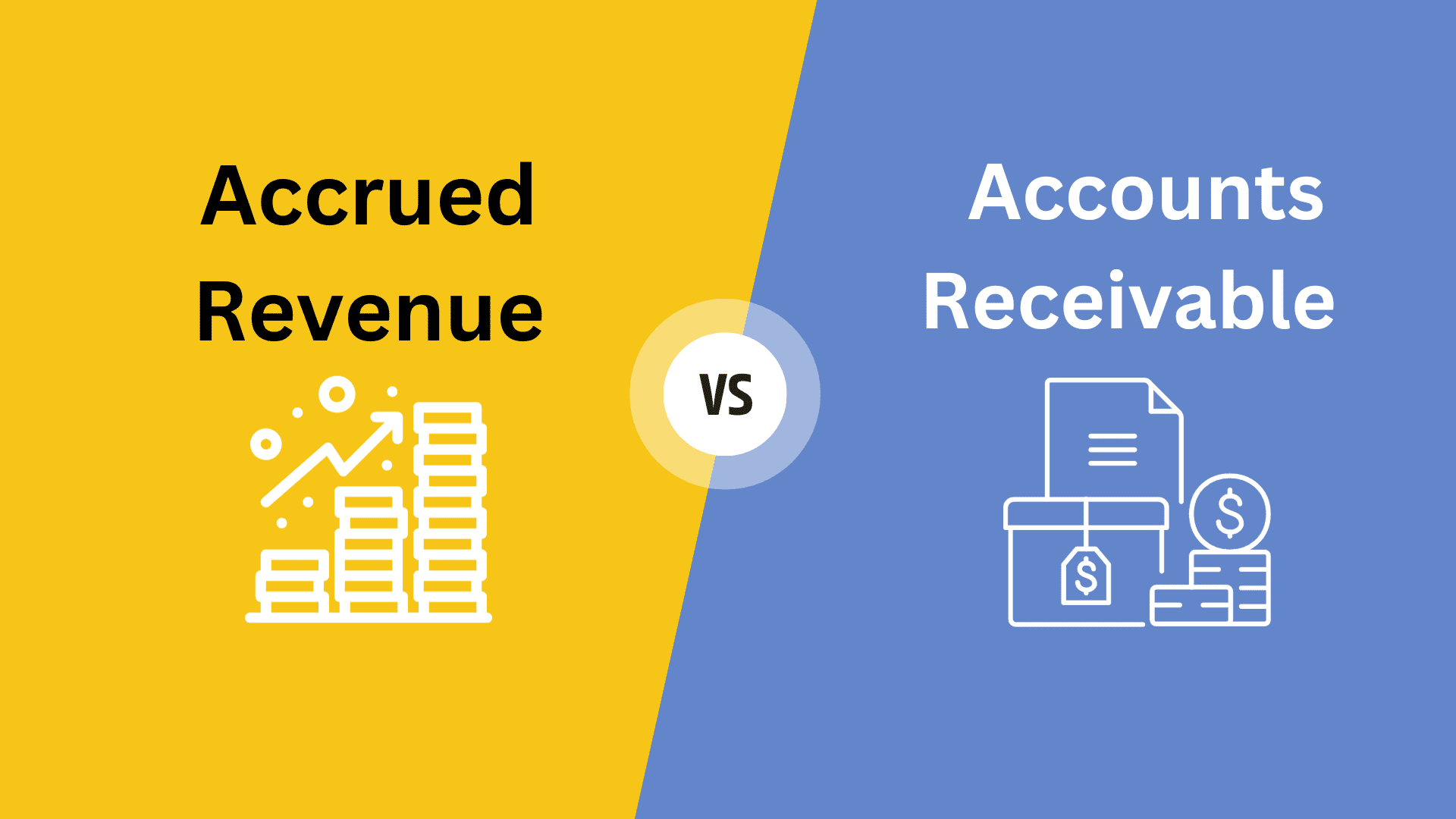A business has a continuous cash inflow and outflow. They sell products and services and earn revenue. However, earned revenue is typically not equal to cash-on-hand. It takes time for a business to receive revenue after providing a service. For small businesses, this duration could be a few moments to a few days, but for large businesses, it can be months.
Money that lies in this process is accounted as accrued revenue and accounts receivable. These accounts are different in business accounting, and this blog post will provide the difference between the accrued revenue and accounts receivable.
What is Accrued Revenue?
Accrued revenue is earned money that the business has not yet billed to the customer. Businesses show this revenue as a current asset on their balance sheet. They can record it as soon as the transaction occurs, and they earn the revenue.
For example, if a business sells a service or product for 10,000 USD and neither receives the revenue nor bills it, a business can record this revenue in its balance sheet.
Under generally accepted accounting principles (GAAP), businesses can record accrued revenue when they satisfy a performance obligation. For example, revenue is recognized when a sales transaction occurs, and the customer receives the product regardless of whether the customer paid or credit.
Accrued revenue follows the accrual accounting principle, which says that revenue must be recognized when earned, regardless of when the business receives the payment.
[There is another term, “unearned revenue” or “deferred revenue.” which can confuse professionals. These terms are different than the accrued revenue. In deferred revenue, the business receives the money before providing the service or product. Deferred revenue is the liability to the business.]
Accrued revenue is also known as accrued income.
Which Companies Use Accrued Revenue?
In project management, many organizations do not send invoices to customers as soon as they complete the task because it will cause them to send invoices all the time, which will be time-consuming and inefficient.
So, they send invoices at regular intervals (e.g., monthly).
Many service providers also send monthly invoices to reduce accounting costs and processes. They keep the earnings in accrued revenue. However, product sellers bill the customer as soon as the product is sold.
What is Accounts Receivable?
Accounts receivable is revenue that has been earned and billed to the customer but has not yet been received. This is also a current asset.
For example, if the business sells a service or product, bills it to the customer, sends the invoice, and the customer receives the bill but does not immediately pay it, then it goes into accounts receivable.
Note that the business still has not received the funds. Once the customer pays the invoice, it moves to the cash balance.
Difference Between Accrued Revenue and Accounts Receivable
The following table shows the key differences between Accrued Revenue and Accounts Receivable:
| Aspect | Accrued Revenue | Accounts Receivable |
| Definition | Revenue that has been earned but has not yet been billed to the customer. | Earned revenue is billed to the customer but has not yet been received. |
| Recognition Timing | It is recorded when the revenue is earned—regardless of when the cash is received. | It is recorded when the sale is made, and the customer is billed for payment at a later date. |
| Nature | Non-cash assets on the balance sheet. | Non-cash assets on the balance sheet. |
| Example | A consulting firm performs services in December but won’t receive payment for services rendered until January. In December, they recognized accrued revenue for the services provided. | A company sells products to customers in October and issues an invoice for payment due in 30 days. The amount of the sale is recorded in accounts receivable. |
| Cashflow | It doesn’t affect cashflow at the time of recognition. Cash is received later. | It doesn’t affect cashflow at the time of recognition. Cash is expected to be received in the future. |
| Entry in Balance Sheet | It appears on the income statement as revenue and on the balance sheet as an asset (i.e., accrued revenue). | It appears on the balance sheet as an asset (i.e., accounts receivable) and later as revenue when cash is received. |
| Application | Common in service-based industries that provide services before payment (e.g., consulting or legal services). | Common in businesses that offer credit terms to customers (e.g., retail, manufacturing, and wholesale). |
Summary
Accrued revenue represents revenue that has been earned but has not yet been received in cash. In contrast, accounts receivable represent money owed to a company by its customers for goods or services delivered. Both are non-cash assets on the balance sheet but differ regarding recognition timing and their impact on cashflow and financial statements. Both accounts are recorded on the same side.
